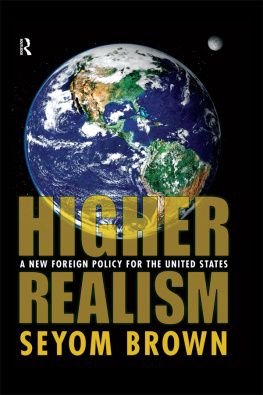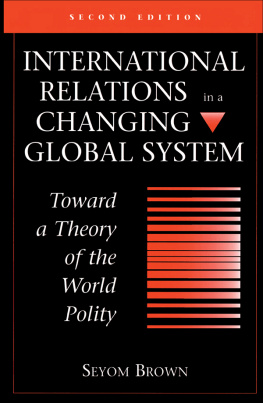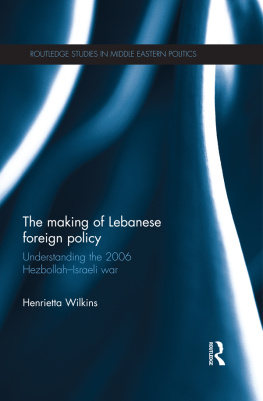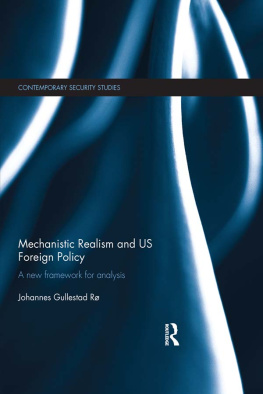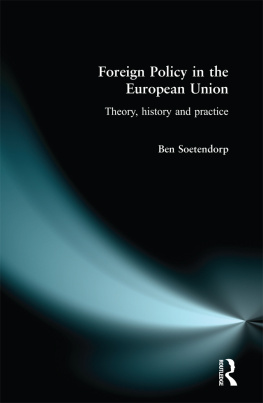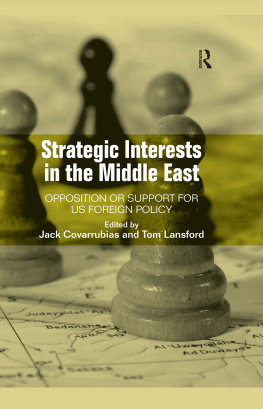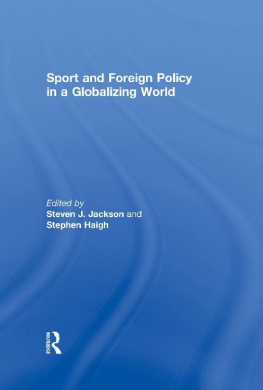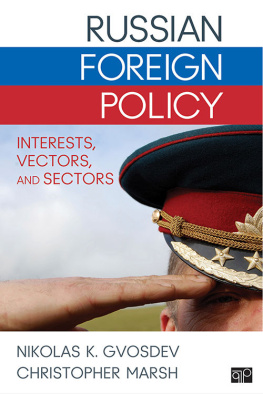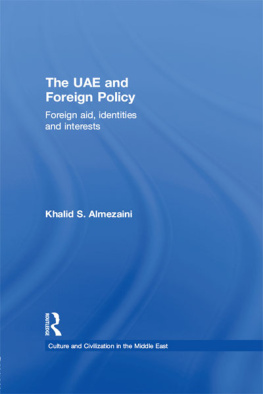For Vanda
First published 2009 by Paradigm Publishers
Published 2016 by Routledge
2 Park Square, Milton Park, Abingdon, Oxon OX14 4RN
711 Third Avenue, New York, NY 10017, USA
Routledge is an imprint of the Taylor & Francis Group, an informa business
Copyright 2009 , Taylor & Francis.
All rights reserved. No part of this book may be reprinted or reproduced or utilised in any form or by any electronic, mechanical, or other means, now known or hereafter invented, including photocopying and recording, or in any information storage or retrieval system, without permission in writing from the publishers.
Notice:
Product or corporate names may be trademarks or registered trademarks, and are used only for identification and explanation without intent to infringe.
Library of Congress Cataloging-in-Publication Data
Brown, Seyom.
Higher realism: a new foreign policy for the United States/Seyom Brown.
p. cm.
Includes bibliographical references and index.
ISBN 978-1-59451-398-5 (hardcover: alk. paper)
1. United StatesForeign relationsPhilosophy. 2. United StatesForeign relations21st century. I. Title.
JZ1480.B68 2009
327.73001dc22
2008039249
ISBN 13 : 978-1-59451-398-5 (hbk)
ISBN 13 : 978-1-59451-399-2 (pbk)
Designed and Typeset by Straight Creek Bookmakers.
A comprehensive new foreign policy for the United Statesformulated by an individual. Higher Realism, no less. What can justify such a seemingly presumptuous enterprise?
Precisely because U. S. foreign policy now involves so many specialized domains, each with its own dilemmas and politically charged controversies, often requiring technical knowledge, attempts to freshly formulate a comprehensive design for the countrys role in the world can rarely get out of committee, so to speak. And if they do, the result is unlikely to move much beyond BOMFOG (Brotherhood of Man/Fatherhood of God) verities. Yet without a coherent view of how the various policy domains crucially affect, and can be at tension with, each other, and without a set of ordering principles for determining priorities and trade-offs, even the purposefully practical recommendations of diverse-membership groups (such as the foreign policy planks in the platforms of the political parties) are likely to run off madly in all directions.
There are times when it is appropriate that consistency and coherence give way to politics in the policy formulation processso as to ensure that competing special interests are adequately represented and that there will be accountability to affected communities. Ultimately, broad popular support is a requisite for a sustainable foreign policy, and it is a component of the national and world interests that I argue must be served. But this is one of those times when a systematic dialogue among policy makers, analysts, and the informed and attentive public is required on the needs and values of the nation as a whole and how these might be realized in the evolving global system. My proposal for a new foreign policy is designed to stimulate that systematic dialogue.
Neither I, nor any other individual, has anywhere near the required expertise in all of the fields encompassed by the new foreign policy I am advocating. In many of these domains, those of us aspiring to provide the needed synthesis therefore must rely on trusted brokers for understanding the complexities and assessing the comparative advantages and disadvantages of contending policies. This has certainly been true in my effort.
Mentors early in my professional career whose lasting impact on my thinking deserves acknowledgment include Hans J. Morgenthau, Robert Endicott Osgood, Morton A. Kaplan, Tang Tsou, and Leo Strauss (my graduate professors at the University of Chicago); Alexander L. George, Bernard Brodie, Albert Wohlstetter, and James Schlesinger (my senior colleagues at the RAND Corporation); Herman Kahn (that much-maligned and much-misunderstood strategic guru, whom I nicknamed Maherman Khandi); and Richard Falk.
Midcourse on the trajectory toward Higher Realism, I received important feedback and guidance from policy analysts and policy makers Paul Warnke, William Bundy, Leslie Gelb, Morton Halperin, Tony Lake, Zbigniew Brzezinski, Marshall Shulman, Marshall Goldman, Henry Owen, Joseph Nye, James Chase, Alton Frye, Jerome Kahan, Barry Blechman, Fred Bergsten, Lester Brown, Thomas Hughes, Edith Brown Weiss, and Larry Fabian.
More recently, when I was working on my Brookings book The Illusion of Control, crucial reality checks were provided by Richard Haass, James Steinberg, and Michael OHanlon. During this period the President of Brookings, Strobe Talbott, and I began a dialogue, carried on since then, on alternative visions (and dilemmas) of global governance.
While I was engaged in the actual writing of Higher Realism, invaluable perspectives were provided by Graham Allison, Steven Miller, Sean Lynn-Jones, Richard Rosecrance, Stephen Walt, Kevin Ryan, and other colleagues at Harvard Universitys Belfer Center for Science and International Affairs, where as a senior fellow I was provided a stimulating venue for working on and testing out some of the core ideas. As senior advisor to the Security Studies Program of the Massachusetts Institute of Technology, I also received senior advice on geopolitical realities and military policy from Carl Kaysen, Barry Posen, and Harvey Sapolsky. Other colleagues with whom I had useful exchanges on issues I was developing in the book are Stanley Hoffmann, Robert Keohane, Robert Hunter, Lawrence Finkelstein, Robert Paarlberg, Owen Cote, Jr., John Hamre, Larry Korb, Robert Pastor, Kenneth Oye, Anthony Lake, Robert Gallucci, Robert Einhorn, Andrew Bacevich, Vanda Felbab-Brown, Walter Russell Mead, William Zartman, Robert Litwak, Elliot Feldman, Lily Gardner Feldman, Ramchandra Guha, Jessica Tuchman Mathews, Robert Art, Cindy Williams, Chris Preble, Steven Clemons, Michael Lind, William Ruger, Robert Jordan, James Hollifield, Schuyler Marshall, Donald Hays, Matthew Elias, Emile Sahliyeh, Michael Desch, Eugene Gholz, Joshua Itzkowitz-Shifrinson, and Sanjeev Kumar.
As this is a policy-prescriptive book, not an academic treatise, the endnote citations do not detail the ways each of these colleagues (and probably some I have left out) has informed and helped shape my analysis. And some of them, I know, as they now read the final product, may well take issue not only with specific parts of the argument but with its general thrust; yet I acknowledge them nonetheless as valued interlocutors.
Many of those mentioned have been devotees of Realism, what I call Conventional Realism. My effort to persuade them as well as general readers to embrace a somewhat enlarged and visionary foreign policy called Higher Realism may seem to imply that their worldview is inferior to the worldview I am offering. I do argue that Higher Realism provides a more appropriate paradigm for the emergent realities, but, as I elaborate in the text, the Higher is meant to describe added dimensions of analysis and focus, not to trump Conventional Realism with a mere term. For to do the latter would be to invite a fatuous verbal dual in which Higher Realism is caricatured as far out, spacey, or in orbit. I do like the metaphor of viewing Planet Earth from outer space (as shown on the dust jacket of this book); but it should be noted that the reconnaissance satellites that give us such inspiring images are also capable of high-resolution photography that can focus in with remarkable precision on particular terrestrial symptomssuch as the melting of glaciers, desertification, encampments of homeless refuges, provocative missile testsof emerging fundamental threats to human security and well-being.

